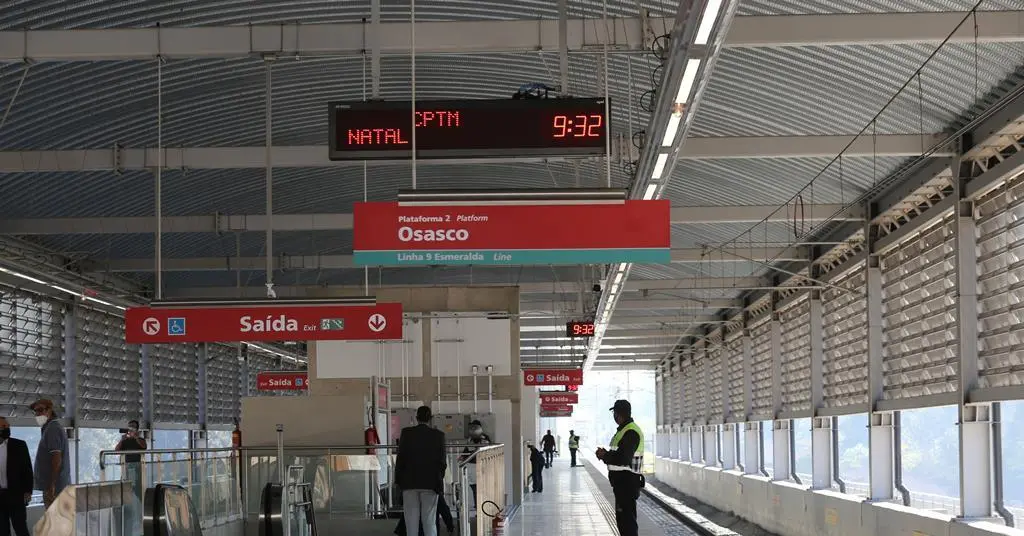Part of the ceiling at Osasco Station on São Paulo’s Line-9 collapsed on Wednesday. ViaMobilidade, the overseeing company, blames heavy rain for the incident.
Luckily, no injuries were reported.
Videos on social media showed a busy station when it happened. However, the affected area was closed for maintenance.
ViaMobilidade issued a statement. “At 4:40 pm, the plaster gave way due to rainwater weight. We had already closed off that section. Our team is fixing it.”
After operating on a limited basis for nearly 30 hours, Line 9-Esmeralda of São Paulo’s Metropolitan Train Company resumed normal service on Wednesday.

Interestingly, this comes a day after a workers’ strike at CPTM, Metro, and Sabesp. The protest was against company privatization.
Line-9, managed by ViaMobilidade, wasn’t part of the strike. On the previous day, publicly run lines shut down while Line 9 stayed open.
Background
This incident joins a list of infrastructure issues plaguing São Paulo. Last year, a bridge also suffered damage during a storm.
These events raise concerns about the city’s preparedness for extreme weather conditions, which are becoming more frequent due to climate change.
The workers’ strike the day before is another layer. They opposed the privatization of state-run companies.
Private entities like ViaMobilidade manage Line-9. This mishap highlights the debate over private versus public management of key infrastructure.
Globally, aging infrastructure is a shared concern. In the U.S., several bridges and roads are in need of urgent repair.
In Europe, historic structures face similar problems. Investments are essential for both maintenance and updates.
Moreover, the issue of privatization versus public control is a universal topic. The UK, for example, has seen heated debates over its rail system.
Some argue that privatization brings efficiency, but incidents like this question such claims.
Asia takes a hybrid approach. Japan’s rail system is a privatization success story, while China’s is state-run and also highly effective.
Each model has pros and cons, but safety remains a non-negotiable factor.
Natural disasters also play a role. Hurricane Katrina showed the U.S. wasn’t fully prepared.
Similarly, floods in Germany and Belgium last year exposed weaknesses. Infrastructure must be climate-resilient.
São Paulo, as a major global city, offers a case study in these challenges. The ceiling collapse could serve as a wake-up call.
It’s essential to assess whether privatized entities can meet public safety standards.
Another critical aspect is public perception. After this event, trust in both private and public services may waver.
Effective communication is key to restoring confidence.
In summary, the Osasco station incident isn’t isolated. It’s a microcosm of broader issues that span from local governance to global infrastructure challenges.
Whether it’s São Paulo or another global city, the problems are universal, but so are the potential solutions.

